Finally...let's get those jellyrolls home!
Last summer when the time came to load and haul the round bales home, I was offered the opportunity (read drafted) to add another task to my Certified Farm Hand (CFH) designation. But we didn’t use the regular hay trailer; we used one specifically designed to haul these gigantic brome jellyrolls. However, this task still required that I drive the flatbed farm truck because the bale hauler has a gooseneck hitch. There’s always an adventure afoot when I get behind the wheel of the farm truck!
The loading process for big round bales is different than the process for small squares due to the size of the round bales: 1,150 pounds versus about 80. Bucking bales with a hay hook isn’t an option! This operation requires a tractor with a bale fork. The loading logistics are also different: Instead of driving both the tractor and the truck pulling the hauler from one bale to the next, loading one at a time, the bales are pre-arranged in lines of seven, the hauler capacity, then loaded all at once in one location. This eliminates driving two gas hogs the full distance, stopping and starting at each bale. Considering the bales are usually anywhere from 50 to 100 yards apart, this method is much more efficient in terms of time and fuel usage.
Here’s what a round bale hauler looks like from the side and looking down from my position astraddle the horizontal bar of the gooseneck hitch (and trying not to fall off!):
When the call came, Cricket and I jumped in the truck and took off for the field. I knew maneuvering this rig through the gate into the field would require finesse to not take out the gate posts or turn at too sharp an angle, putting excessive torque on the sacred gooseneck hitch. (Sacred? At $4,000 a pop, you betcha!) I pondered the situation during the two-mile trip and came up with a plan: Start my wide turn early and aim for the gate at an angle, not straight on. The plan worked well. My right side mirror cleared the gate post by about one-half inch, but the left rear wheel of the trailer dropped off into the ditch which, luckily, was shallow. Pretty successful, I’d say.
We headed for the first line of bales. Bill arranged each line with a gap in the middle big enough for me to drive through and park. He speared the first bale and loaded it on the hauler. He speared the second bale and used it to push the first bale forward on the hauler until the second bale was loaded. He repeated this process until seven bales were on board.
We arrived home and Bill parked where he wanted to unload bales. I moved into position with my camera, he grabbed a lever on the side of the hauler, pulled it out at a 90 degree angle, then pushed it up.
We went back to the field, repeated the loading process and returned home. Positions, everybody! OK, Bill, let ‘er rip!
After the last bales were on the trailer, we headed for home. This trip, Bill drove the tractor which left me (Yikes) to drive the truck and loaded bale hauler. To protect truck side mirrors, gate posts, hauler wheel axles, sacred gooseneck hitch and our marriage, Bill drove the load out of the field and onto the road. We convoyed home with me in the lead. I don’t know which made me more nervous: driving the rig, or knowing Bill was behind me and would see and have plenty to say about any near-misses or flat-out collisions! We made it home unscathed and Bill even complimented me on my driving. Kudos to June, the Jellyroll Hauler!

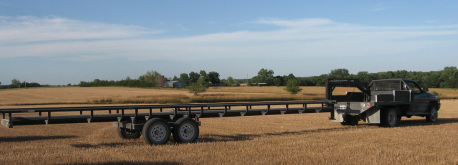
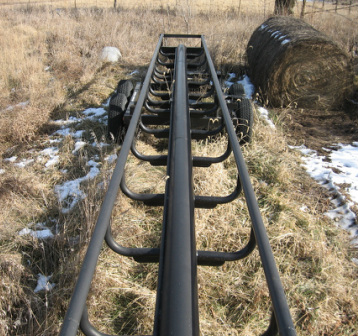
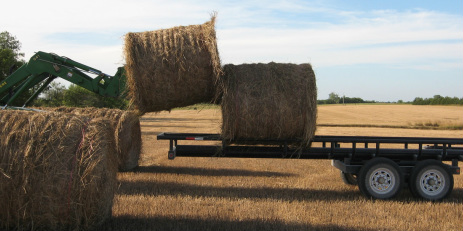
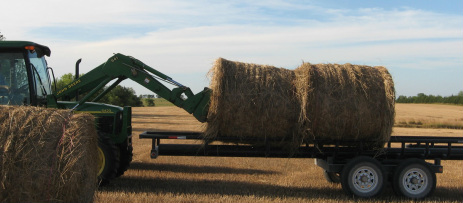
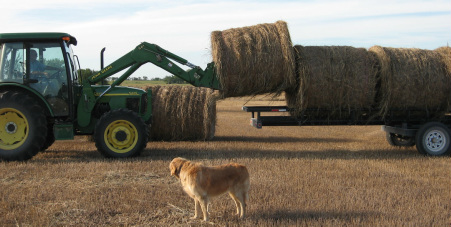
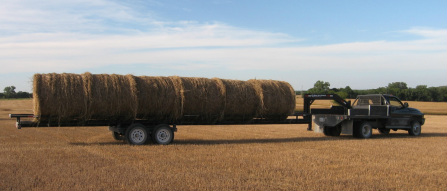
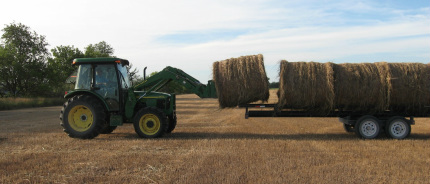
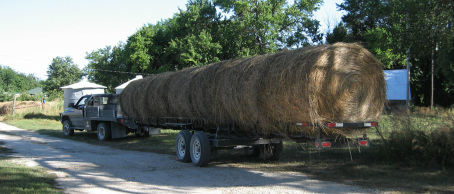
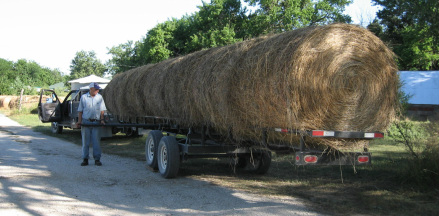
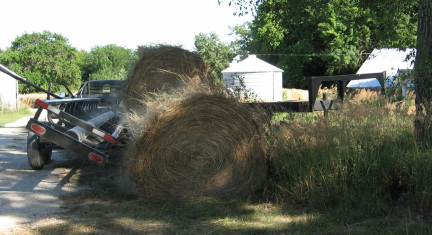
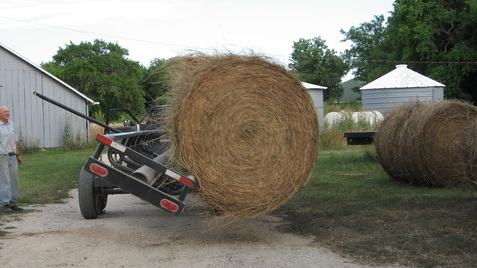
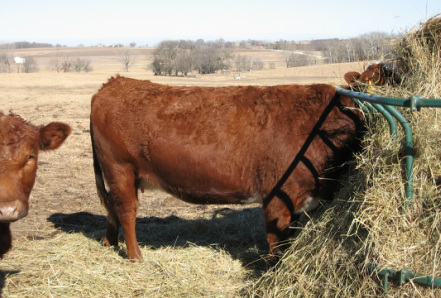
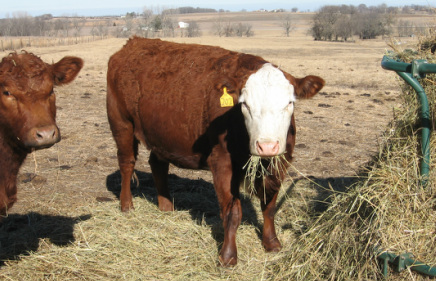
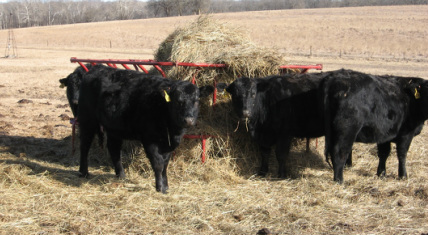
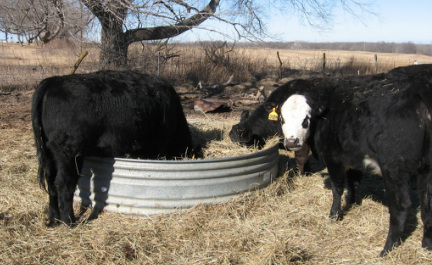

 RSS Feed
RSS Feed